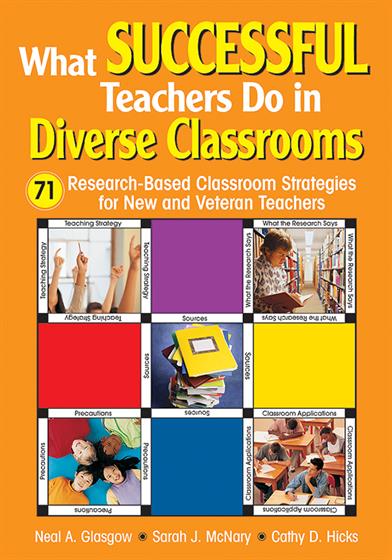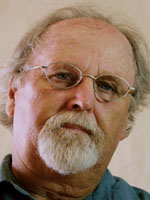Foreword by Donna Heath
Preface
Acknowledgments
About the Authors
Introduction
1. Making the Multicultural Connection
Strategy 1: Be sensitive to the diversity of today’s classrooms.
Strategy 2: Move beyond “color blind” teaching and take the time to know students in specific localized cultural contexts.
Strategy 3: Reflect on how multicultural competence is defined today.
Strategy 4: Help immigrant students by understanding their personal beliefs.
Strategy 5: White Ethnic students need multicultural education too.
Strategy 6: Cultivate multicultural connections.
Strategy 7: Develop and promote a positive ethnic identity to students.
Strategy 8: Watch for factors of exclusion that influence multicultural curriculum choices.
Strategy 9: Focus on the classroom management factors that best reflect culturally responsive teaching.
Strategy 10: Include multicultural works when developing a quality English curriculum.
2. Including Students with Special Education Needs
Strategy 11: Recognize that different cultures view disabilities differently.
Strategy 12: Teach all students about disabilities to facilitate the social acceptance of students with special needs
Strategy 13: Avoid excessive drill and repetition when teaching math.
Strategy 14: Spend more time teaching a few key concepts rather than trying to cover it all.
Strategy 15: Tailor homework to ensure success for students with disabilities.
Strategy 16: Spend the time to develop and use a variety of assessment strategies.
Strategy 17: Offer positive and constructive feedback rather than criticism.
Strategy 18: Communicate student progress early in a course, but avoid using formal grades to do so.
Strategy 19: Ensure students receive appropriate instructional or assessment accommodations.
Strategy 20: Be aware of potential bias when considering the recommendations of the Student Study Team
Strategy 21: Focus on classroom process before course content to increase time on task.
Strategy 22: Consider using Universal Design for Learning Principles when designing lessons.
Strategy 23: Encourage students to set process goals when learning new technology.
Strategy 24: Create scaffolds to help students learn complex skills and procedures
Strategy 25: Focus on instructionally centered communication when working with students with learning disabilities.
Strategy 26: Encourage students with disabilities to develop positive interpretations of their academic performance.
Strategy 27: Use instructional strategies that support the specific needs of students with attention deficit/hyperactivity disorder (ADHD).
3. Cultivating Gender Sensitivity
Strategy 28: Open the dialogue with students regarding gender equity issues.
Strategy 29: Support male and female students differently during school to school transitions as gender can influence their needs.
Strategy 30: Become aware of the traits of gifted females.
Strategy 31: Work to prevent inequities between male and female students’class partcipation.
Strategy 32: Consider how students sometimes treat female teachers differently than male teachers.
Strategy 33: Address gender issues in the classroom to increase student success and confidence.
Strategy 34: Be prepared for subtle gender bias in academic situations.
4. Including Students Who are Sexual Minorities
Strategy 35: Create a classroom environment of safety and respect.
Strategy 36: Access libraries to provide a more inclusive collection for sexual minorities.
Strategy 37: Explore curriculum that includes minority sexual identity and sexuality.
Strategy 38: Weigh the issues of choosing to remain “closeted” vs. “coming out” within educational settings.
Strategy 39: Consider the effect of teachers “coming out.”
Strategy 40: Be aware of the diverse and complex path that gay males undertake in self-defining themselves as gay.
Strategy 41: Work to prevent “low-level violence” in schools.
5. Supporting Students Who are Economically Disadvantaged
Strategy 42: Teach group skills to help low-income students establish a positive and encouraging support network to increase their likelihood of attending and completing higher education.
Strategy 43: Use cooperative test review and study guides to improve student achievement.
Strategy 44: Encourage all students to enroll in rigorous courses and build in the needed supports to facilitate their success.
Strategy 45: Utilize a variety of print materials to inspire student reading and writing.
Strategy 46: Explore the effects of pacing on student learning when working with low-income students.
Strategy 47: Teach self-regulation and attention sustaining skills to help students improve their performance.
Strategy 48: Explore team teaching to address the needs of economically disadvantaged students.
Strategy 49: Mentor economically disadvantaged students to improve their aspirations.
Strategy 50: Make academic success the first priority for economically disadvantaged students.
Strategy 51: Use a variety of assessments to identify gifted students from underrepresented groups, particularly economically disadvantaged students.
Strategy 52: Support equal access of extracurricular activities to promote student connectedness.
Strategy 53: Use popular films featuring urban classrooms as starting points for reflection and critical analysis.
Strategy 54: Be aware of the factors that contribute to the failure of highly competent students.
6. Meeting the Needs of English Language Learners
Strategy 55: Be wary of low expectations for language minority students.
Strategy 56: Reflect on the complex issues surrounding school literature selection for bilingual and bicultural students.
Strategy 57: Carefully consider the use of cooperative groups with second language students.
Strategy 58: Explore the definition of literacy and the complexity of the term when applied to bilingual and bicultural students
Strategy 59: Actively address the diverse needs of English learners.
Strategy 60: Prepare for a cultural and linguistic mismatch between teachers and their students.
Strategy 61: Select spell checker programs that meet the needs of the specific student population.
Strategy 62: Consider portfolios to create an overview of student performance and growth.
7. Working with Parents
Strategy 63: Develop strategies to help parents help their children succeed academically.
Strategy 64: Include parents from marginalized groups by making them feel welcomed.
Strategy 65: Involve minority and culturally diverse parents as resources in the classroom.
Strategy 66: Consider the positive and negative effects that homework has on students and their families.
8. Establishing and Sustaining Your Professional Identity
Strategy 67: Actively seek opportunities to expand personal experiences in multicultural settings.
Strategy 68: Internalize that cultural experience and perspective is different for each individual.
Strategy 69: Recognize the signs and symptoms of “diversity-related burn-out.”
Strategy 70: Successful teachers should become knowledgeable about adolescent culture.
Strategy 71: Do not underestimate the preparation necessary for placement in urban multicultural settings.
Index





